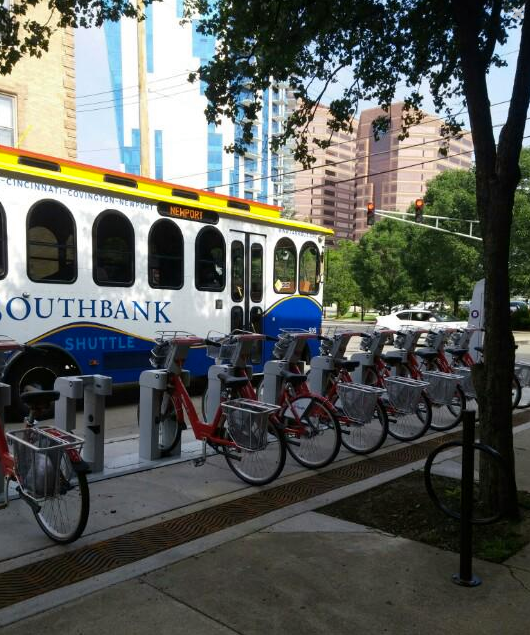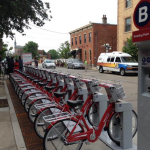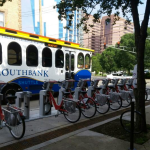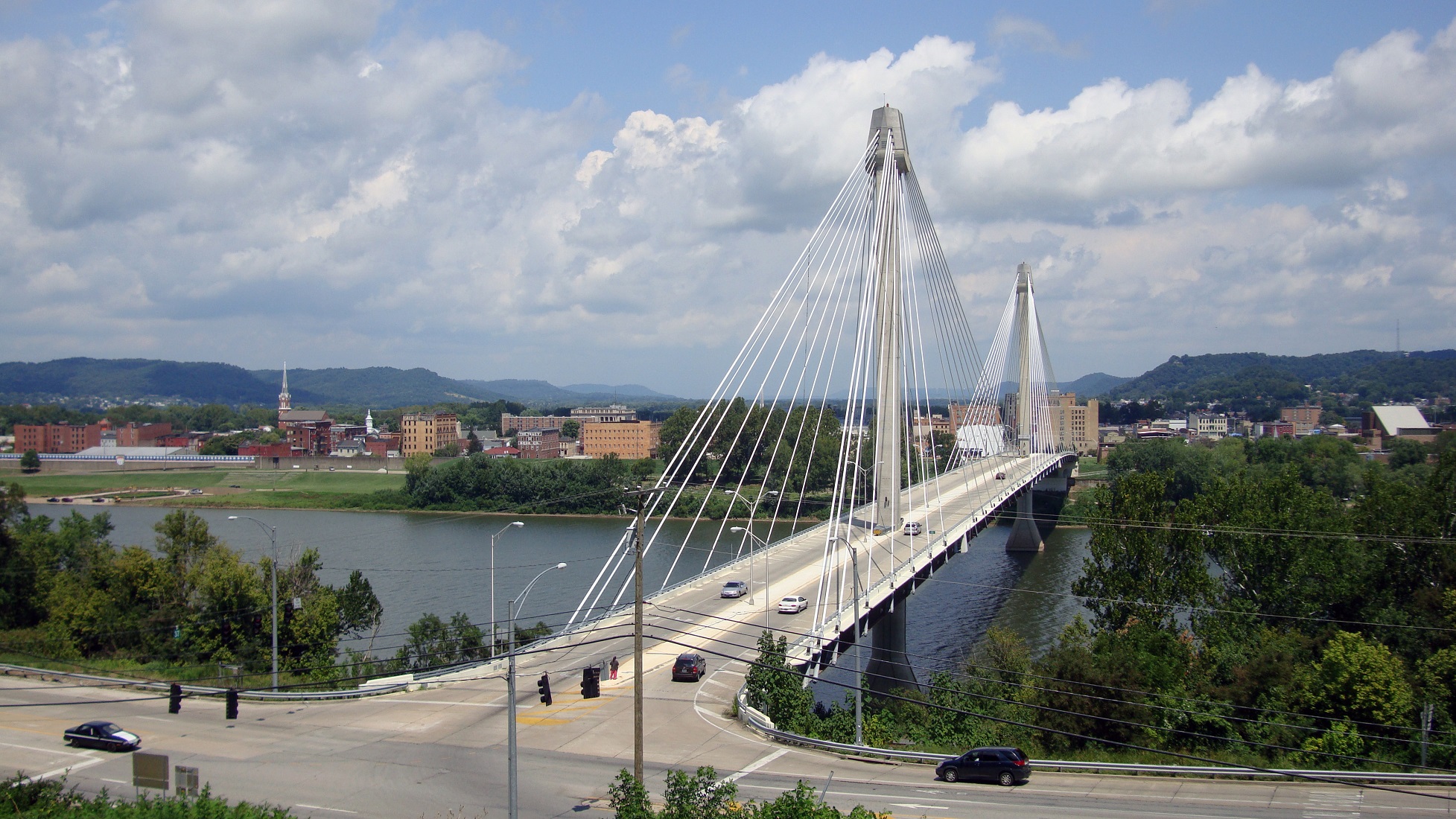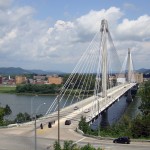Community leaders gathered in Covington yesterday to celebrate the opening of the first six of 11 new Cincy Red Bike stations in Northern Kentucky. Four additional stations will be opened in Newport, and one in Bellevue, by the end of the week.
The expansion south of the river is a natural expansion for the system, which has thus far focused on Cincinnati’s center city neighborhoods. After initially launching with 30 stations in Downtown, Over-the-Rhine, Clifton Heights, University Heights, Clifton, Corryville and Avondale, Cincy Red Bike has now added new stations in the West End and Northside.
Perhaps more critical for the system’s ridership, however, is the fact that many of the newer stations in Ohio are what operators call “infill” stations. For these, Jason Barron, Cincy Red Bike Executive Director, says that they are looking at locations that focus less on landmarks, and more on where people live car-light or car-free.
“The three busiest stations, by a factor of a third, are Fountain Square, 12th/Vine and Main/Orchard,” Barron previously told UrbanCincy. “We will start to look at areas in the West End like Linn Street, Bank Street, City West and maybe Brighton. We have to look and see where there are opportunities to connect people and make a difference in their lives.”
Once the remaining installations are complete, Red Bike will boast 50 stations, making it the largest bike-share operator in Ohio and the first in all of Kentucky. CoGo Bike Share in Columbus is the second largest with 41 stations following a recent expansion of their own.
After a predictably sluggish winter, it now appears that Cincy Red Bike is on pace to at the very least meet, and most likely exceed, its first year ridership projections. When the system launched in September 2014 the hope was to attract 52,000 rides within the first year. As of now, some 46,000 rides have been made on the public bike-share system.
With the system average 4,600 rides per month, including the slow winter months, the initial projection will be easily surpassed. If that monthly ridership rate increases over the forthcoming summer months, and with the added stations and bikes, the non-profit agency may be able to significantly exceed its own goals.
The enthusiasm in Northern Kentucky appears to be setting the table for even more expansions in the Bluegrass State in the near future. Already, funding is being lined up for an additional station in Bellevue, and the president of Southbank Partners told River City News that they hope to see Red Bike added to Dayton, Ft. Thomas and Ludlow as well.
In addition to Northern Kentucky, additional infill stations are anticipated uptown and neighborhood leaders continue to call for the system’s expansion to the Walnut Hills area.
Red Bikes can be used by purchasing an $8 pass that is good for unlimited rides of 60 minutes or less over a 24-hour period. Those who plan on using the system more than 10 times per year are better off purchasing an annual membership for $80.
